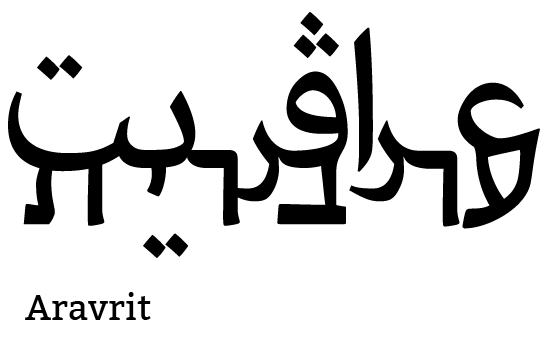
Scrips and people don’t live in a void
aravrit2020-11-04T18:46:55+00:00Scrips and people don't live in a void

Those moments
There was a moment, a very specific moment when I realised that scripts don’t live in a void. They live together, interlaced, in Israel’s urban environment: Hebrew, Arabic and English. Each script is affected by surrounding scripts, which in turn influence them back, a symbiotic relationship.
In Israel, most signage, in particular official signs for roads and streets, feature text in three languages. Even though the letters are usually cluttered, we never miss our exit on the highway, because we are so accustomed to identifying in a fraction of a second the script we read best. We never overlook our own script, but what about the other two?
There was a moment, a very specific moment six years ago, when I realised that I am looking at the signs around Haifa, my hometown and ignoring the Arabic. The Hebrew was clear as glass, the English was present. But the Arabic? The Arabic was an array of curves and dots. I was looking at it as nice decorative additions to the Hebrew.
There was a moment, a very specific moment that I decided to take action. It was done in my own way, with my own tools- letters. There was no politician or a party, no peace movement, no one else. But at the same time, all of us. I decided that I should not, cannot, ignore the Arabic that surrounds me for years.
From research to systems
A survey of how official multi-lingual signs look like, lead me to the understanding that there is rarely an attention is given to the way the three scripts work together. Finding a way to give the Arabic the same respect as the Hebrew, was my my main goal.
The research was done in several parts. History oriented, visually targeted and optically. My buzzing brain reminded me to dig out a story I read about few years back. Louis Émile Javal, a French ophthalmologist, discovered back in the 19th century, that in order to read Latin, one would only need the top half of the letterforms. I connected the dots and started my journey with this discovery. To my surprise, the concept worked for the Arabic and for the Hebrew, while using the bottom half. I started to construct new letters. Each one was composed of the top of an Arabic letter, and the bottom of a Hebrew letter. The letters were a new hybrid, yet at the same time relied on the essence of the basic letters.
Beyond Aravrit, connection people
The idea of a new script is nice, but the meaning of Aravrit project, only came with the reactions to it. Each reader, was able to read the language that she or he felt comfortable with. If one was an Arabic reader- the top part would be the place to go to. I, as a Hebrew reader, would look at the bottom. We would both get the same message, the same content, but we would not ignore the other part which is present. Connected. Living in sync. Sharing the space.
It is letters, which we see around us and read. It is letters which help us convey a message, tell a story, provide content and context.
This is how a new writing system, sends a message that is broad. It talks about life together, about our surrounding. The tool is our most basic ingredient of day-to-day activities. It is letters, which we see around us and read. It is letters which help us convey a message, tell a story, provide content and context.
Aravrit makes people stop and think. They discover that it is possible to read a script and at the same time be aware of another one. They discover that the reality of life together is worth a discussion. Far from the politicians and formal institutions. It touches humans, regardless of their native tongue. By the ease of reading it, the pleasure of noticing it and the curves that construct the new letters, the Hebrew and the Arabic are closer together. I cannot overlook the Arabic any longer. Aravrit is my perfect closure.






Comment (1)
A big thank you for your blog article. Really thank you! Awesome. Sarene Remus Ensign
Comments are closed.